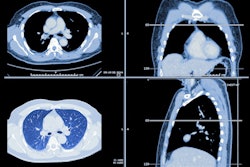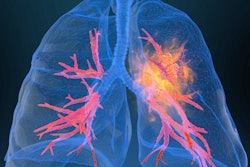
Despite enthusiasm for CT lung cancer screening, many imaging administrators in a new survey reported feeling hindered by barriers to support and resources that keep them from running more effective programs. The findings were published July 9 in Chest.
The results highlight the work that needs to be done to make CT lung cancer screening programs more effective, wrote a team led by Kerrie Buehler of the Swedish Cancer Institute in Seattle.
"By conducting this [survey], we identified a gap between support and resources given to the CT imaging sites and motivation and commitment from the local lung cancer screening leaders," they wrote. "It is vital that a centralized information system is created so that all the responsibility of lung cancer screening is not left to a single administrator."
The survey comes on the heels of a lung cancer screening guidance update released in March by the U.S. Preventive Services Task Force (USPSTF) that broadened the pool of people eligible for screening by lowering the starting age from 55 to 50 and adjusting smoking history from 30 pack years to 20 pack years.
Yet there continue to be barriers to CT lung cancer screening uptake, according to Buehler's team.
To better understand these barriers, the researchers conducted a phone interview survey of administrators and lung cancer program coordinators at 76 imaging sites that provide low-dose CT exams for lung cancer screening. Of the 76 sites included in the survey, only eight reported having no barriers to lung cancer screening. Most described a number of blocks to implementing a successful program, including the following:
- Lack of support or guidance. "We are inventing the wheel for sure," one participant stated.
- Lack of tracking, full-time employee resources, or a program champion. "Without [a] physician champion, I'm struggling to bring the program along," another participant said.
- Lack of education for referring physicians.
But participants expressed strong motivation for implementing a lung cancer screening program, the investigators noted.
"When it comes down to research and putting this into place ... I will go at it and take care of whatever we need to do," one respondent stated.
Another said the following: "I think my heart is in preventive medicine ... for many reasons, I think that we can save a lot of money in the long run, I think that we can save lives in the long run. So you know that's the thing that fascinates us that we have a tool that can be used to potentially save lives."
Putting a successful CT lung cancer screening program in place may be as straightforward as better organizing resources, according to the authors.
"The dedication of these administrators and coordinators has the potential to be harnessed by providing more coordinated and possibly shared institutional support to abolish the sense of 'reinventing the wheel' each time a new imaging site implements lung cancer screening," they concluded.



















